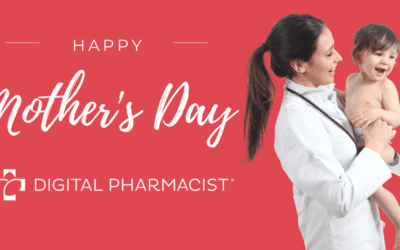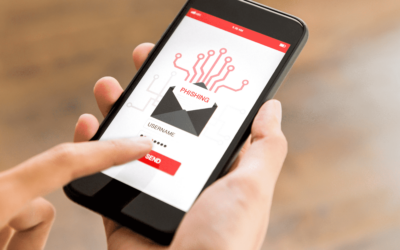Successful pharmacies rely on strong patient relationships which, like any other relationship, require good communication.
Patient-centered communication requires a friendly environment where healthcare professionals accommodate diverse learning styles and knowledge of health terms and information. Done correctly, it can improve patients’ use of medication and encourage better therapeutic outcomes.
What Is Pharmacy Communication?
The most common methods of patient communication today are:
- Verbal communication. Talking with patients when they pick up a prescription or through the drive-thru or answering questions over the phone
- Written recommendations. In-store handouts and flyers, health education materials, and one-on-one discussions via email or secure messaging
Recent trends in patient communication have encouraged a focus on developing lasting patient relationships and personalizing care. The rise of digital technology has made it crucial for pharmacists to offer multiple touchpoints for easy and quick communication so patients can connect with them online as well as off. Many pharmacies now look to digital solutions to help them create a seamless, secure experience.
How Do Pharmacists Communicate With Patients?
Effective pharmacist-patient communication starts with an assessment of a patient’s health literacy, whether you’re offering individual medication counseling or teaching a wellness class.
Health literacy determines the degree to which patients can process health information and make informed decisions.
Necessary health literacy skills include:
- Reading prescription labels and health education materials
- Understanding care and treatment directions
- Following diagnostic test instructions
- Completing health-related applications and forms
According to a national health survey by Professional Research Consultants, nearly one-quarter (23.3%) of the US population struggle to read or understand basic health information. While health literacy can vary based on age, location, education, and other demographics, it’s often contextual and independent of literacy in other industries or areas.
5 Quick Tips on Improving Communication in Pharmacy
Pharmacists must develop their communication skills in order to keep patients engaged and adherent.
Here are five ways you can enhance your patient-provider communication.
1. Keep it Short and Simple
Whether you have 5 minutes or 50 to talk to a patient, it’s important to limit and simplify the information you’re offering. If you are giving information verbally or in person, especially over the phone, try to break the information down into small chunks rather than cramming a lot of facts into a short amount of time.
A few other ways to simplify communication:
- Use plain language over medical jargon to make health information easier to understand
- Avoid medical abbreviations, especially with medications and conditions
- Offer specific examples rather than vague instructions (e.g. “Take medication two hours after eating” rather than “Take on an empty stomach”)
- Include visual aids in your conversations like diagrams or demonstrations of techniques and devices
The Centers for Disease Control and Prevention (CDC) offers Plain Language Resources so healthcare professionals can make health information easier to understand.
2. Focus on Key Messages
According to the Rule Of Three, thoughts, ideas, and information are easier to remember in small groups and aid pattern recognition. Try to adopt this rule in patient conversations by limiting yourself to three main points. If you need to make more, offer written handouts they can refer back to later.
To identify key messages, ask patients what their top questions or concerns are and add them to other important information you need to share, such as prescription instructions.
During a longer discussion, find ways to reinforce your main points and assess patients’ knowledge at the end of each section or after introducing new information. And be sure to summarize them again at the end of your conversation.
3. Ask Audience to “Teach Back” to Check Understanding
Commonly used in education and healthcare, the “teach-back” method assesses a person’s knowledge of information given by having them restate it in their own words. Instead of saying “Do you understand” or “Does that make sense?” have them demonstrate their knowledge with openers like:
- If you were to explain this to someone else, what would you say?
- Tell me what happens when you…
- Show me how you would…(when demonstrating skills and techniques)
- What would you do if ____ happens?
This also helps you confirm that you’ve explained things in a way your patient understands. Use their answers to determine whether or not to clarify or correct information and be sure to acknowledge when they’ve got something right.
4. Encourage Questions
No matter how well you prepare, questions will always come up during conversations with your patients. Give them the opportunity to get the clarity they need.
Closed-ended, yes/no prompts like “Do you have any questions?” are a lot less likely to encourage a dialogue. Instead, try for something more open-ended, such as “What questions do you have?” or “What would you like me to go over again or clarify?” This solicits questions without putting anyone on the spot or making them feel like they didn’t understand the material.
If patients struggle to articulate their concerns, direct them to resources that will help them formulate the right questions to ask about their healthcare.
5. Provide Easy-To-Read Materials
Remember, patients are likely to have lower levels of health literacy, so it’s important to back up any discussion with patient-friendly materials. Handouts you offer should define and explain any complex information and offer basic instructions or disease-specific care plans.
They should also include:
- Plain language with shorter, more familiar words and sentences
- Large, easy-to-read fonts and plenty of white space
- Visual aids, such as diagrams or simple illustrations
- Pharmacy contact information, including a phone number and email
It’s also smart to provide educational materials in a range of multimedia formats, such as video and audio. This can help you get information across easier and allows patients to choose what works best for their learning style.
Increase Retention and Revenue With Effective Patient Communication
In today’s digital world, pharmacists can benefit from leveraging solutions that will simplify communication and increase engagement. Digital Pharmacist’s Patient Engagement Platform is a transformative platform that supports digital patient-pharmacy relationships. The messaging solution increases communication effectiveness and security, allowing pharmacists to initiate real-time conversations on a HIPAA-compliant platform.
The Patient Engagement Platform’s bulk messaging feature and intuitive workflow automate pharmacy outreach, prescription notifications, and seasonal promotions. With a searchable database, pharmacists can target patients for one-on-one conversations and simplify message personalization.
To learn more about how Digital Pharmacist can help you enhance your pharmacy’s patient communication, get in touch with us or request your free demo today.



